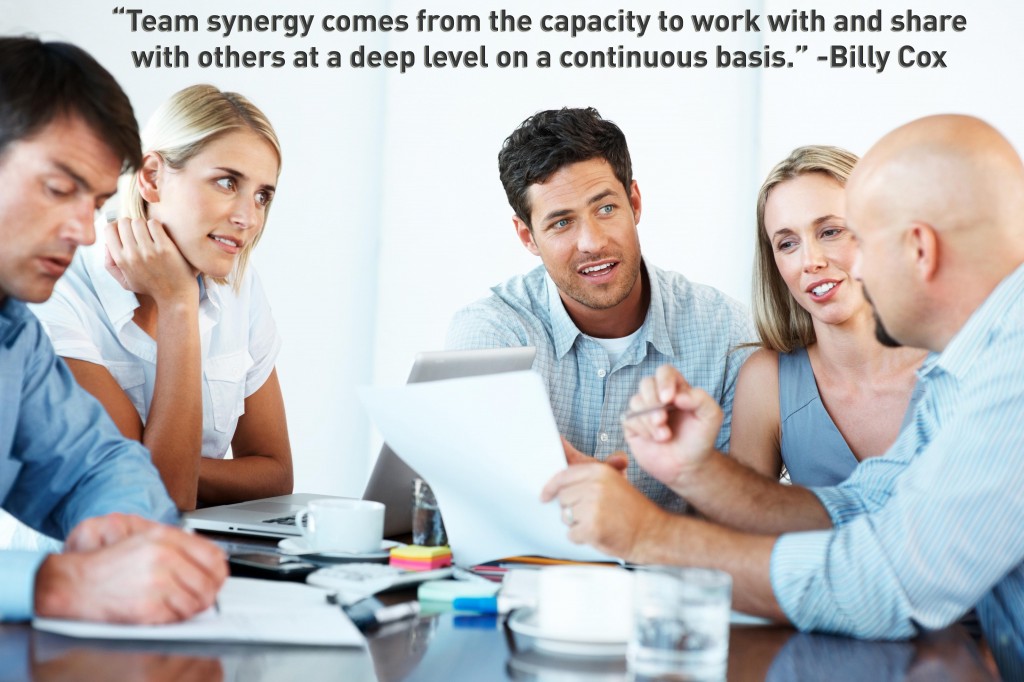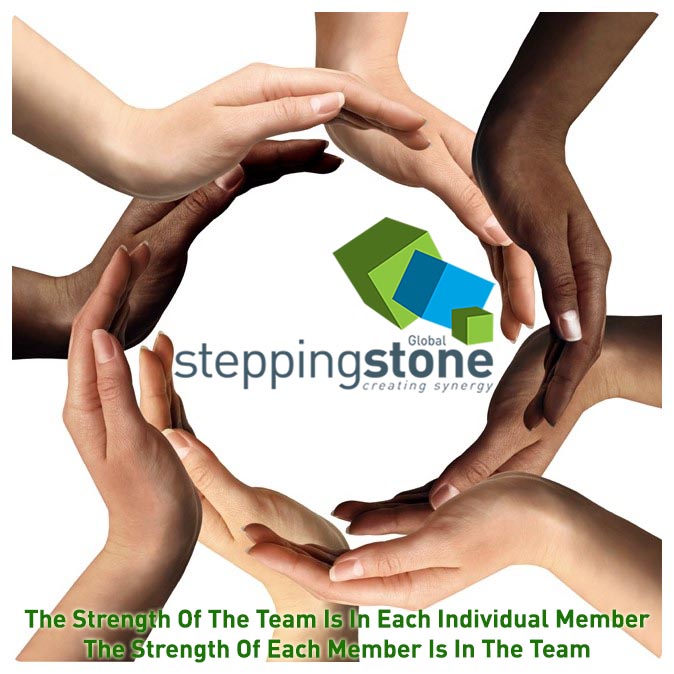“Coming together is a beginning,
keeping together is progress,
and working together is success.” – Henry Ford
Synergy can be achieved through the act of teamwork. The reason why is simple. More actions can be completed when a team of people are working together, than when one person is working by his or herself. The way to achieve this type of synergy is to find people you can work with, people who has the same goals and basic drive as you do. As you work together you will learn each other strengths and weaknesses. You can then adapt to make these strengths work for you and learn how to work around the weaknesses.
According to Daryl Conner, author of the book, “Managing at the speed of change”, a synergistic working relationship is a powerful phenomenon to witness in action-people working together to consume the fewest resources possible to get the job done, while achieving a higher quantity and quality output than if they worked independently. Sponsors, agents, and targets who achieve a high level of synergy stand a much greater chance of realizing their goals during major organizational change. Synergy between change practitioners and clients also accelerates the odds of reaching full realization.
Three Types of Working Relationships
The capacity of individuals or groups to use resources (time, money, materials, and human energy) as a productive unit falls into one of three categories: self-destructive, static, or synergistic.
1 + 1 < 2: Self-Destructive Relationships
In this type of working relationship, people interact in a way that consumes more resources than it generates for the organization. The result is less productive output than might be expected if the same individuals worked independently.
For example, in some organizations, the sales and production divisions spend an inordinate amount of resources protecting their turf from one another, miscommunicating, and blaming each other. They resemble two competitors instead of two inter-related functions within the same system. This also happens when individuals spend more time and energy in conflict with one another than meeting customer needs. Such working relationships are eventually self-destructive because the people involved don’t produce enough output to compensate for the drain on resources that’s required for them to work together. They actually have a negative net production level.
To continue operating in this way, additional resources must come from outside the working relationship. If there are no excess resources to draw from, the organization suffers a resource deficit and is consumed by the drain. If the organization is large enough and/or otherwise healthy enough, it may subsidize the relationship; however, over a longer period of time, the relationship will likely continue to waste time, money, material, and human energy.
These relationships are also doomed because there is no means for addressing the shifting demands of the marketplace. There are no resources to meet minimum productivity/quality expectations, nor is there time, money, materials, or human energy to accommodate the changes needed to remain competitive. The relationships suffer from both inadequate output and the inability to do anything about it.
1 + 1 = 2: Static Relationships
In static working relationships, people interact in a way that consumes resources at about the same rate they are contributed back to the organization. The result is a productive output level equal to what would be expected when two divisions or two people combine their efforts.
At first glance, there appears to be no problem with this type of relationship. The productive output is “normal,” or what one would assume when people work together, but this is only true under certain circumstances. As long as the total environment in which they interact is essentially stable, a strong case can be made for this being an acceptable method. In a stable environment, few changes affect the organization’s operation and it is possible to react to and deal with predictable events.
Unfortunately, this type of relationship doesn’t work during transformational change. Dramatically shifting circumstances rapidly creates new expectations and demands, which generate pressure on the organization and its workers to react swiftly to unfamiliar realities.
Static systems do not generate resources beyond what is required to produce their product or provide their service. They have no reserves from which they can draw to meet the unanticipated demand. Accommodating change is a resource-consuming activity and the needed adaptation resources must come from somewhere. The only option is to pull them from what was allocated to production. Thus, a downward cycle is created that continues until the status of 1 + 1 = 2 degenerates into the 1 + 1 < 2, or self-destructive, state.
1 + 1 > 2: Synergistic Relationships
In a synergistic relationship, cooperative action results in a total effect greater than the sum of what each party could produce independently. Simply stated, operating synergistically means effective “teamwork.”
For example, when professional athletes execute a play, they often demonstrate what can happen synergistically by merging the skills of separate players into a smoothly operating unit capable of performing far beyond what the team members could do independently. It is common to see teams composed of individual “no name” players who, operating synergistically, defeat teams made up of a collection of non-synergistic superstars. As the Navy Seals say, “Individuals play the game, but teams beat the odds.”
Of course, such relationships exist in work settings as well.
- Different divisions can synergistically combine their efforts so that their products are ordered, manufactured, and delivered in a more efficient and effective manner than when each area works independently from the other.
- Management teams can fuse the knowledge and skills of each member into an operating unit vastly more competent than a group functioning as a composite of individuals.
- The relationship between an employee and supervisor can function in a way that blends the talents of both parties while compensating for each other’s weaknesses, yielding a highly productive work team.
People engaged in synergistic working relationships make optimal use of their time and resources to achieve the all-important “excess” needed to manage transitions. The additional resources facilitate change-related productivity and competence as well as create new options that were otherwise unavailable. Synergy does not grant individuals or work teams immunity from the stress of change, it provides the optimal use of resources necessary to react to change sooner and more effectively.


